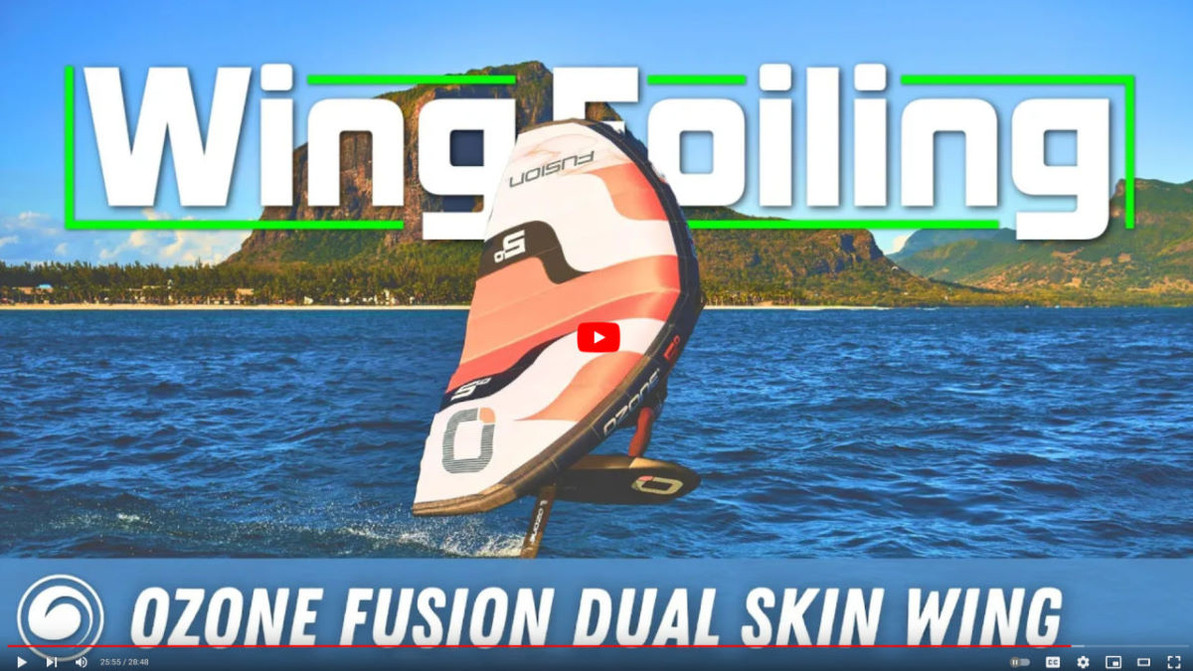Ozone's Patent Pending 2024 Fusion Wing | A Dual Skin, Ram Air, Race Machine?
The 2024 Ozone Fusion takes wing design in a very different direction. While other wings are built like LEI kiteboarding kites with an inflatable frame and single skin canopy, the Fusion is based on a dual-skin foil kite, but keeps the rigid leading edge and center strut. It's unique, it's patent-pending, and it makes some exciting performance claims. Does it live up to the hype? Tucker has done extensive test riding to really get a feel for this special entry into the wing market.
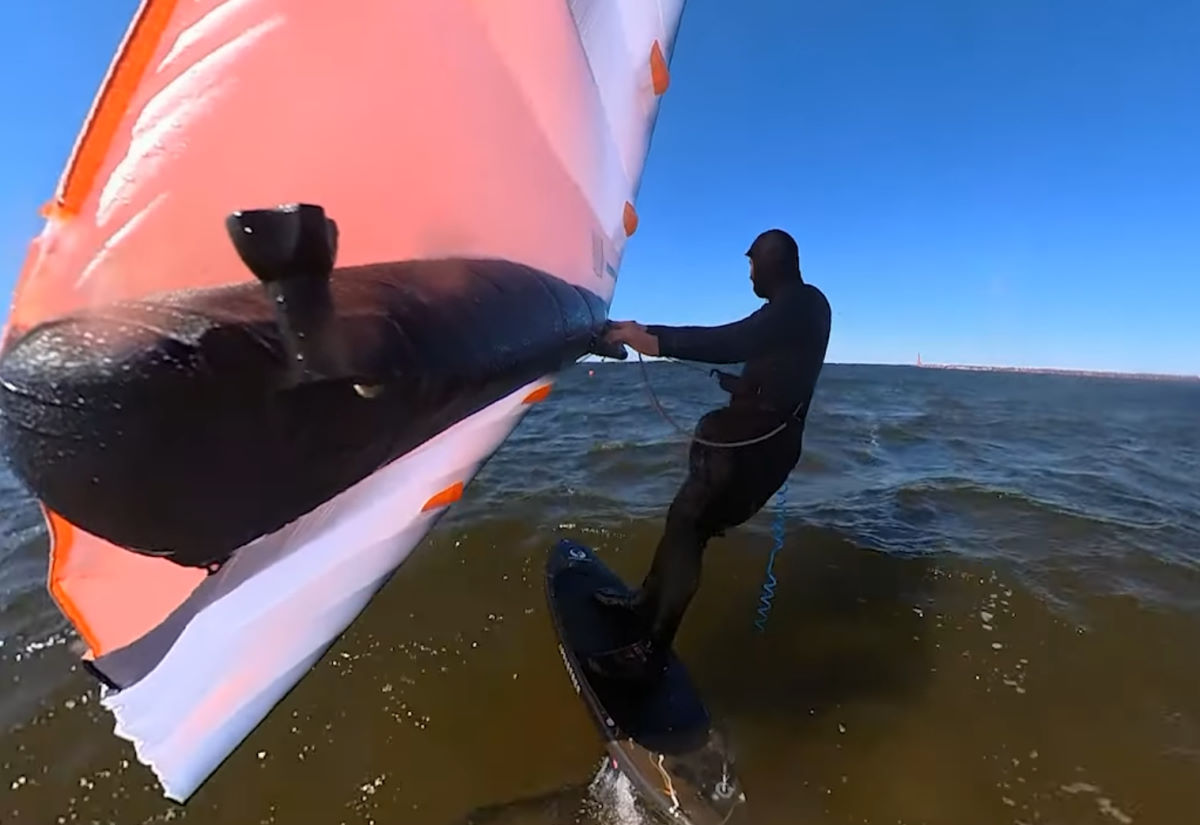
Features
Surf Handle
The surf, or leading edge, handle is thick, stiff, and nicely padded. However, it may be a bit small if you have large hands and ride with gloves. If you usually grab with just two or three fingers, though, it won't be an issue for you. It also has a soft patch underneath, so even though it's a smaller handle, you won't beat up your nails and knuckles when grabbing it.
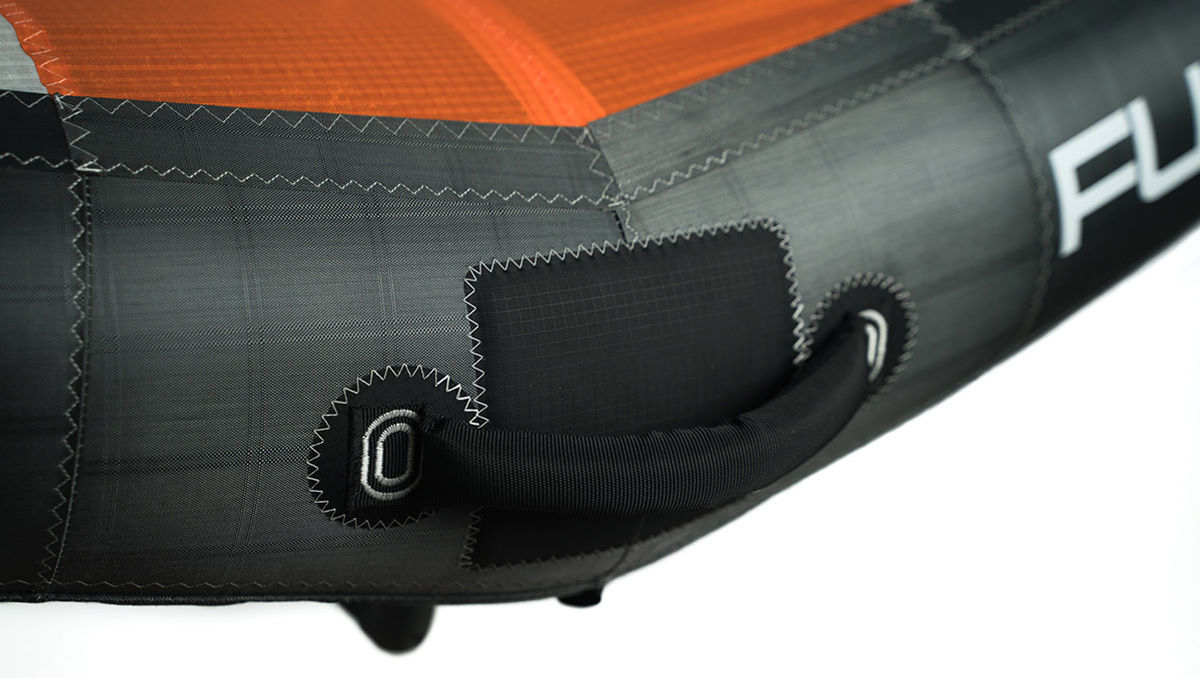
Leash with Belt
This wing does include a leash, as well as a nylon belt to attach it to yourself. If you prefer a wrist cuff, you can attach the leash to that instead, or to your harness if you ride with one. The leash is a good length for doing whatever you like with it. It's not too long or too short.

Handles
If you're familiar with Ozone's handles, then you know what to expect. These have been some of our favorites with their narrow diameter, light weight, and direct connection. Be sure to inflate your strut hard enough to get that nice, solid connection with the handles.
The handles bend inward just a bit to make them more ergonomic for your wrists. It's a very natural-feeling, intuitive position. The front handle has a larger end so that you can have a comfortable pistol grip. There's also a little rubber bumper to help prevent board (or head) dings.
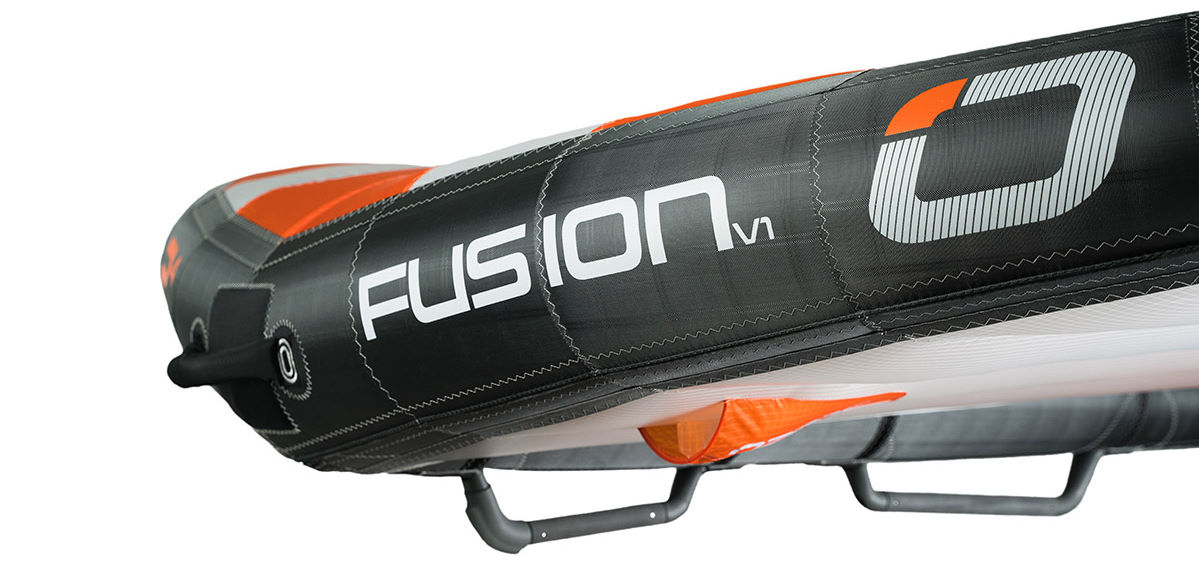
Harness Line Connection
A harness line isn't included, but between the front and back handles is the perfect place to attach one. With the hard handles, you can cinch the harness line up a little higher when you're riding overpowered. That will bring the balance further forward. It's even easy to make adjustments while you're on the water.

Frame Construction
Ozone uses a Dacron that is similar to Duotone's SLS material on their leading edge and strut. It's 20 percent lighter and stiffer than regular Dacron, and Ozone uses a seam weld technology for a smooth, clean layup without frayed edges or anything to catch on. The craftsmanship is top-notch because Ozone owns their factory and has control over all the details to consistently turn out the quality they are known for.
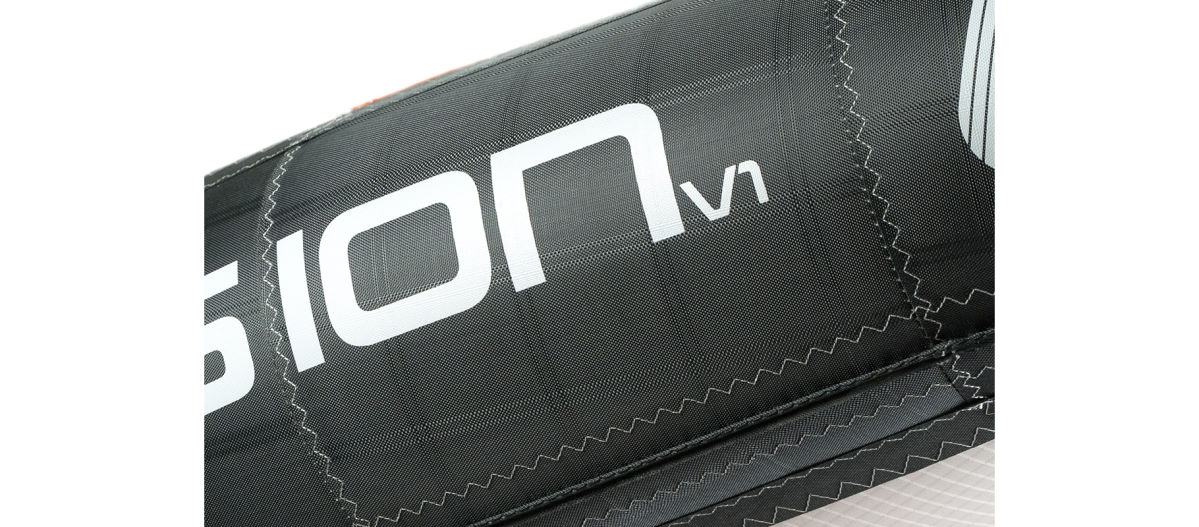
Inflation
Open up the zipper that runs parallel to the center strut to access the Boston style valve on the strut. You'll need a fat tip pressure adapter, which is included with the wing. There is another valve in the leading edge, so you can pump each up to the proper pressure without worrying about hoses or pinch-offs. If you happen to get a leak in either bladder, the other will stay inflated. Just remember to zip the access back up before heading out so the opening doesn't catch in the wind.

Dual Skin
Of course, the dual skin is what makes the Fusion really special. It merges a lot of Ozone's existing technologies like wingsuits and paragliders. For winging on water, there were some special challenges. The frame is in the way of where the air inlets to inflate the airfoil would normally be. And how do you let air in, but keep water out? It's not as simple as adding a second canopy. But with their existing expertise, Ozone was able to hit the ground running on this project, and it works. It's a lot of fun.

How Does It Work?
The inner white skin is a lighter weight material, and the outside skin is the usual dual-strand ripstop canopy material. Together, they form a foil shape. Rather than the air creating vortices and drag behind the leading edge, it flows smoothly over the whole wing, like a hot knife through butter. If you're familiar with ram-air kites from kiteboarding, you know that they are a lot more efficient and better into the wind. For winging, this concept blows the lid off the top end range.

The air enters through the orange ports in the bottom skin. A firm material holds them open so the wind can blow in and fill the space between the skins with enough pressure for the wing to keep its foil shape.
To keep the ports from being crushed and losing their shape while the wing is packed away, they ship with foam pads inserted. Take them out before you ride, but be sure not to lose them so you can re-insert them every time you pack up the wing. It is critical that the air intake ports can efficiently scoop air into the wing and keep the skins rigid.
Inside each air intake port is a baffle, and once the foil has the proper air pressure, that will close and help keep the wing at its optimum shape. It also does a good job of limiting how much water gets in when you fall or hit a wave. The water that does get in drains out at the drainage ports on the wingtips and center strut. While this wing isn't designed as a wave riding wing, this helps a lot if you do take it in the surf, which makes it a very versatile wing.
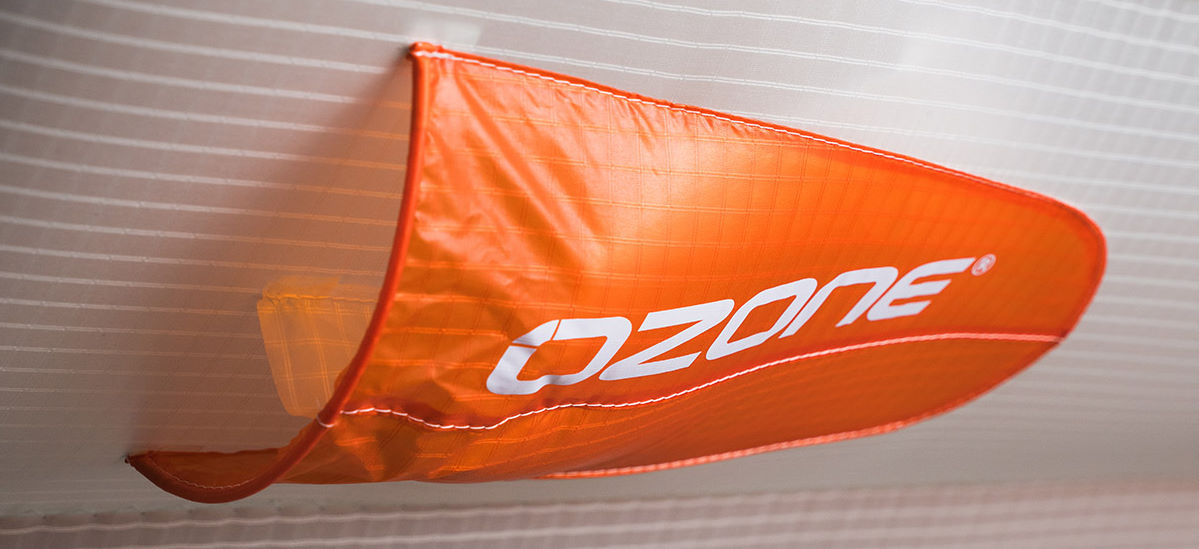
Weight
It seems like adding a second canopy would add quite a bit of weight, but the wing is still well within the average range. While it's not as light as an Aluula surf wing, it's not that much heavier, either. The inner canopy is an ultra-lightweight material since it is the stiffer outer canopy that bears the load.
Tucker's Review
The build quality is phenomenal on the Fusion, and the Ozone team really seems to have nailed the design the first time. You'd expect an innovative idea like this to be on the third or fourth generation before really getting fleshed out, but they got it right the first time. The wing is exceptionally easy to ride.
Initially, I thought this was going to be a niche design that only a few riders would want, but after riding it, I think it has a broader application that will appeal to a lot of people. Now, it was designed first and foremost as a racing wing, and it definitely does excel there. While I'm not a hardcore racer, it's the best race wing I've tried yet. Racing wings are about angles, speed, efficiency, and top end, and the Fusion checks these boxes.
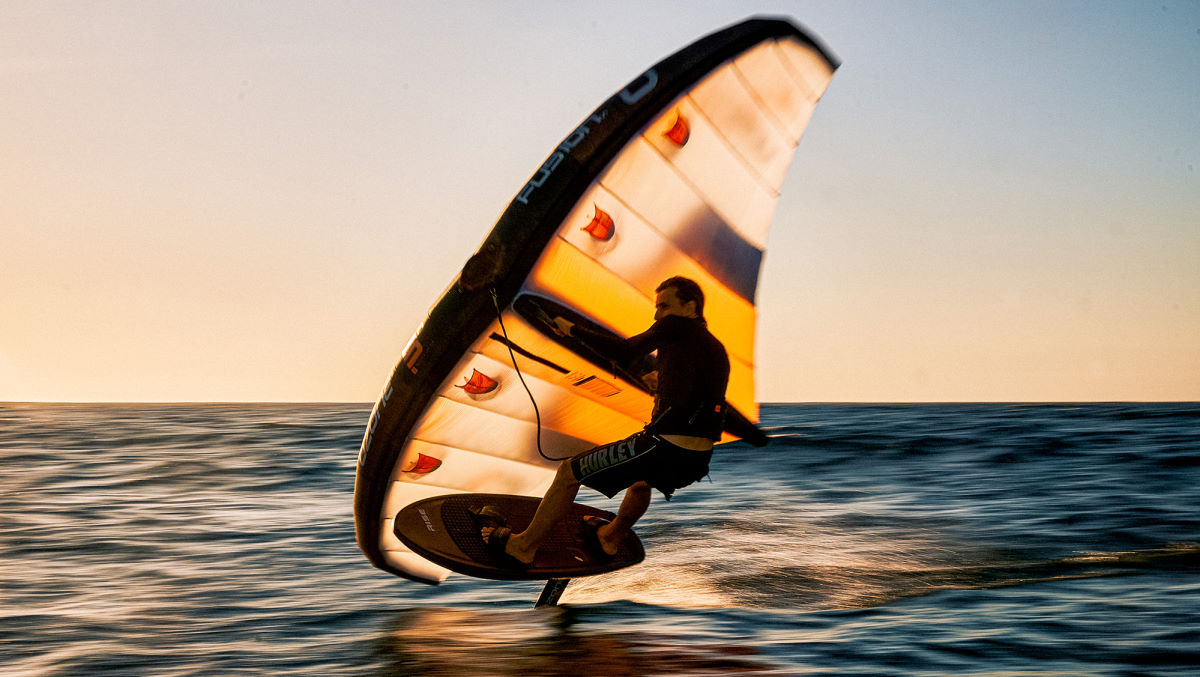
You can size up, knowing that you're not going to get overpowered or yanked downwind. You can hold it down in a crazy amount of wind. At 200lb, I've easily ridden the 5m in 16 - 35 knots. At the upper end, it was very fast and had a lot of power, but it was still manageable, and I probably could have gone to 40 knots. Unless you're racing and the surface conditions are perfect, you're not going to want to do that all the time, but it is do-able.
The reason for this gets back to the efficiency of the dual-skin wing. This is definitely a forward-pulling wing and not a wing with a lot of lift and grunt, so it's not going to lift you onto your foil. As a racing wing, it's not designed for light wind. You'll need to build boardspeed and lift off with your hydrofoil. A larger, narrower board is going to help with this.
Once you are up, the upwind ability is amazing. It's better upwind than any other wing I've ridden. You'll feel it immediately when you get on foil and drive upwind. The only thing limiting you is your speed, your foil, and your technique. It wants to keep accelerating, even when riding upwind and building more and more apparent wind... as long as you're holding the correct sail angle.
That is one thing that keeps this from really being a beginner wing. The sail angle is a bit more finicky and has a smaller sweet spot, like a lot of racing wings. You don't want to over-sheet this wing or it'll fly less efficiently. It took me about 5 minutes to finally home in on that sweet spot, and after that I had to find the harness line location that worked best for that day's conditions. But once I did, it was like a rocket ship.
A lot of racing wings are good either upwind or downwind, so different wings might excel depending on the type of race. However, the Fusion is fantastic both upwind and downwind. That's the magic of the dual skin design. You should be able to gain the advantage with this wing in a race that requires riding in both directions. And it's a lot of fun. If you're into racing, you owe it to yourself to look at this wing.
In racing you'll do a lot of tacks versus jibes, depending on the course and if you're racing upwind or downwind, but this wing is phenomenal going into the wind. It's light and slices right through the wind in a tack. It doesn't slow you down or kill momentum, and as long as you're carrying speed into the turn, it'll make its way through nicely. The handles are easy to find and maneuver with. Even if you're a rider who is progressing into tacks, don't be afraid of it; you can jump right in because it's so smooth and easy to ride.

While the Fusion was developed solely for racing, I do think the design could be tweaked to make models for beginner and intermediate riders by building in a bit more lift and grunt. It'll be exciting to see how the dual skin concept develops and whether different riding styles can benefit from it as well.
Who's It For?
Is this wing good for anyone other than racers? While I'll race my friends from time to time just for fun, I'm not a hardcore racer. I don't track my times, and often I'm not even watching to see how fast I'm going. I just like the feeling of going fast, as long as I'm feeling comfortable and not like I'm on the edge of hurting myself. The Fusion does that for me. It's so smooth and cuts though even shifty conditions like butter.
Jeff and I were out the other day and he was overpowered on a standard 4m wing while I was on the 5m Fusion. When we got off the water, he complained about how nasty, shifty and gusty the wind was, but I didn't even feel it. I was comfortable ripping around and having the time of my life. I probably could have ridden a smaller wing, but it didn't even occur to me to do that.
I was able to do some big, lofty jumps. When you jump this wing, it sails almost like a hang glider. When you go up, it wants to continue its momentum if you're angling it properly. It doesn't necessarily go straight up and float down like some loftier wings do, but it you build your momentum and sail it, it'll do a really fun, gliding jump. Of course, pro riders can use a big wing with a lot of power to do really big jumps, but I had a ton of fun jumping it too.
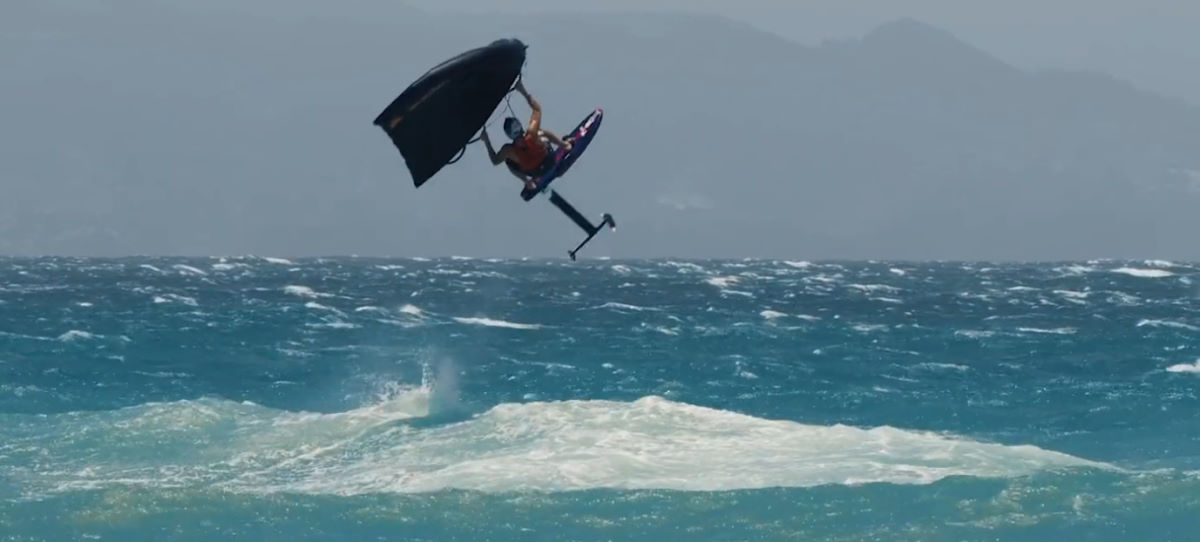
Who's It Not For?
While it does work in waves, the dual skin makes the wing less stable when it's flagged out. It actually doesn't want to flag out because it always wants to be flying and reacting rather than just pinning out straight and being calm and stable in your hand. And, of course, it will take on water if you get submarined through a few waves. It does drain out pretty quickly, but it's not ideal to deal with in a wave situation. If you're a hardcore wave rider, this probably isn't the wing for you, but if you're mainly into going fast and occasionally find some waves to play in, then you can certainly do that.

Quiver
If you want one wing to cover a really massive wind range, the Fusion is the wing to do that. You can get great upwind and downwind angles. For travel, it's nice to bring just one wing and know you can ride in 15 to 35 knots.
A one-wing, two-board quiver is possible with the Fusion. You can take a 5m out in high winds on a smaller board and ride with high performance. You can take the same 5m out in light winds on a downwind board. Now, you probably won't crack the 10 knot barrier unless you're a very efficient rider, but this wing can build a lot of apparent wind before you even lift off.
It doesn't have that much grunt on the low end, so don't go out in 12 knots with a 40 liter board expecting to get pulled out of the water and on foil. This wing likes to ride powered, and it's happiest when it's got a lot of air moving through it. It likes to ride fast. If you like riding overpowered on small foils, but not feeling overpowered, this is definitely the wing to go with. It's a lot of fun for that.

Durability
I've put the Fusion through its paces and have ridden it in more wind than is normal, and it's still crispy with no issues at all. This speaks highly of the Ozone design team's construction, and I'm stoked on that.
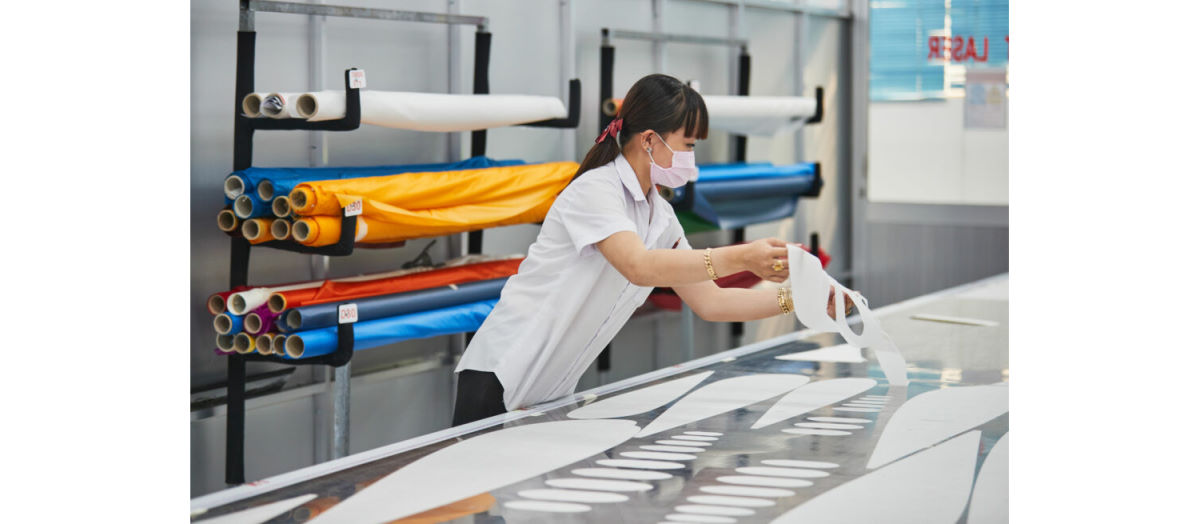
Tucker's Nitpicks
Not so much a nitpick since it's the design of the wing, but more something to be aware of is that you have to watch your face when you're hooking in with a harness line. You lose a few inches of space for your nose with the bottom skin being right there and will end up with a face full of canopy if you don't lean back. It's a little awkward at first, but it's easy to adjust to.
Things to Know
You won't pump this wing like you normally would. It doesn't want to scoop the wind like a single skin wing will. It wants to slice and create forward speed, so slide it forward as you're pumping. With a grunty wing, you'll pull with your back hand, but you'll need to pull with your front hand instead on the Fusion. Definitely take this wing out in powered-up conditions the first couple times until you get a good feel for the quirks of a dual-skin wing.
You'll usually want to size up on this wing. If everyone else is out on a 4m, you'll be happy on a 5m. If they're on a 5m, grab the 6.5m.
I've also tested the bigger sizes. The 7.3m is a lot of fun on lighter days. It's the wing you'll fly when others have a 6m. You're going to be riding faster than they are, ripping upwind while they're just taxiing around. It's not a light wind wing for 8 knot conditions, but if you have an efficient board with good low end, you can get out in quite light conditions, and I've ridden it comfortably in up to 25 knots. It's also great for bigger guys who just want to rip and feel comfortable and smooth.
Summary
If you're racing and want to be competitive, the Fusion is definitely worth a look. It's a fresh, innovative idea from the Ozone team and flips wing design on its head. There are huge performance advantages built into this wing, and everyone intermediate level and up should give it a try. It is a fun, unique experience.
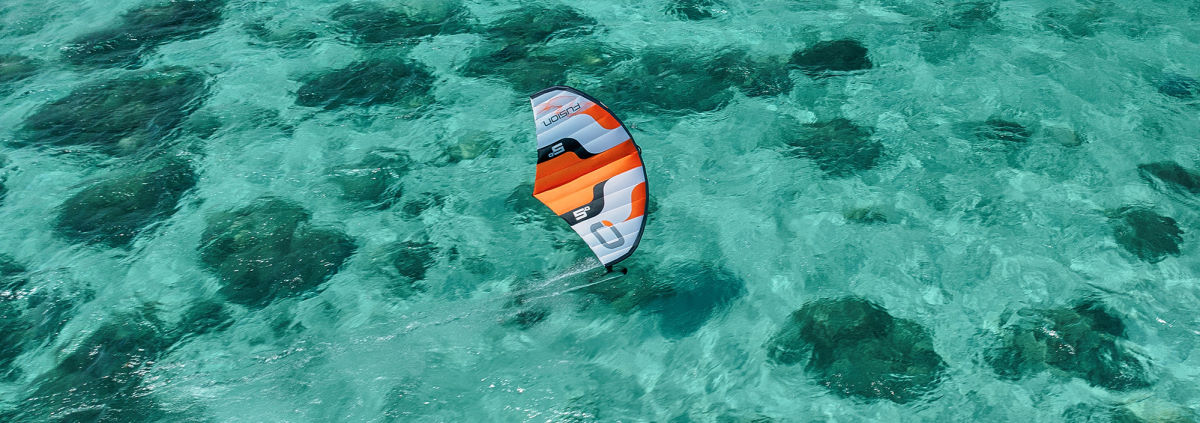
MACkite Subscription Links:
YouTube | Instagram | Spotify Oddcasts
Contact MACkite Below:
800.622.4655 | Kiteboarder@MACkite.com | LIVE Chat Messenger

Recent Posts
-
Reverse Downwind Foil Drive with Eric Sterman
Professional drone pilot and surfer Eric Sterman is taking advantage of a rare opportunity t …9th May 2024 -
Is Kiteboarding the Same as Kitesurfing?
Let's dial-in a common mix-up that's as persistent as it is puzzling—the difference between kiteb …9th May 2024 -
2024 F-One Strike V4 Wing Vs. Swing V4 | Which One is Right for You?
Tucker and Jeff are back with some more winging goodness for Wing Wednesdays. Today they're …8th May 2024

